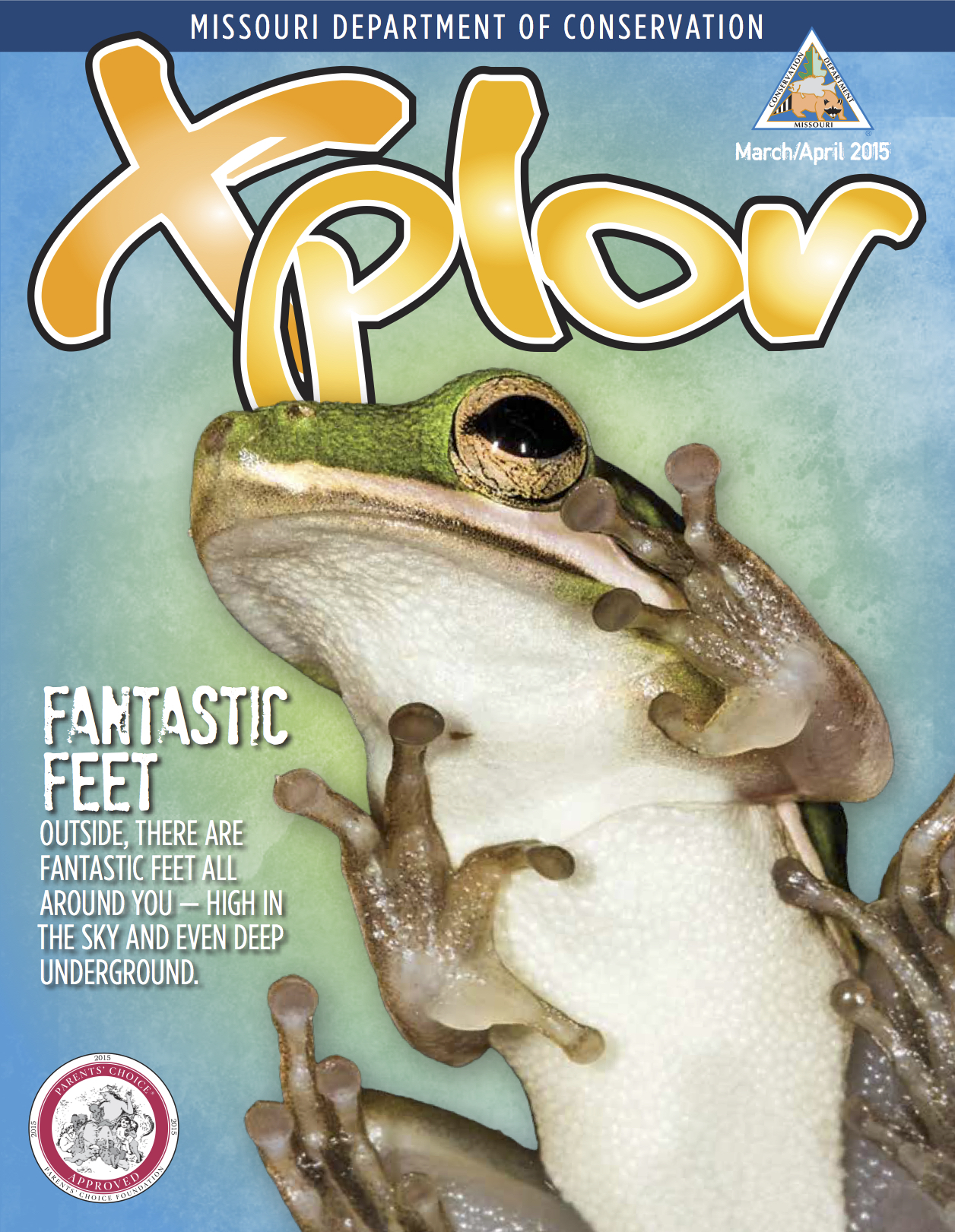Although the mean streets of the city seem like a hard place for animals to survive, many of the same critters found in Missouri’s wildest places are turning up in our most crowded spaces.
SiouxZee and Coal are like most suburban parents. They own a cozy home with a spectacular view and a nice-sized backyard. It’s a short commute from downtown St. Louis and a safe place to raise their growing family. Both parents work hard to put pigeons on the table.
Pigeons?
Yep. SiouxZee and Coal are peregrine falcons, the fastest birds in the sky, capable of feather-whipping dives approaching 200 miles per hour. And like peregrines in Kansas City, Springfield, and Jefferson City, they’ve traded the cliffs they normally nest on for skyscrapers and other buildings.
Forty years ago, peregrines were in danger of disappearing, with fewer than 50 nesting pairs in the United States. When biologists released falcons in wild places to try to boost their numbers, predators such as great horned owls took a heavy toll. But peregrines released in cities seemed to do just fine. Cities contained fewer predators, skyscrapers were as easy to nest on as cliffs, and the streets were chock-full of pigeons and starlings to eat. Now, peregrine numbers have rebounded, and the majestic birds regularly nest atop skyscrapers in downtown Kansas City, an energy plant near St. Louis, and the Capitol dome in Jefferson City.
Birds in the ‘Burbs
The Show-Me State’s cities have large parks, lots of green space, and neighborhoods lush with trees. These areas offer surprisingly good habitat for wild critters to make their homes, raise their babies, and find food to eat.
For years, western kingbirds have nested atop the lights of Kauffman Stadium in Kansas City while the Royals play baseball below. Wild turkeys have been spotted strutting on front lawns and weaving in and out of parked cars near the Plaza in Kansas City and in the busy Central West End neighborhood of St. Louis. And, more than 200 kinds of birds have been recorded in St. Louis’s Forest Park, including white pelicans, trumpeter swans, and bald eagles.
Give Turtles a Brake
In the springtime, box turtles awake from a long winter sleep and begin crawling around to look for mates and places to lay eggs. Many turtles cross busy city streets in their quest. Though their tough shells shield them from predators, they’re no match for vehicles that weigh more than a ton. Help your parents watch the road for turtles, especially in April and May. If there’s no traffic, you can stop and gently help a turtle to the other side of the road.
City Critters
It isn’t just feathered creatures who are making their homes in cities. Deer, raccoons, and opossums are a regular sight in most urban areas, and more surprising four-legged fur balls are turning up as well. In many places, when poodles and golden retrievers leave the dog park at the end of the day, their wild cousins come out to play. The yipping of coyotes is commonly heard in many metro areas after dark, and red and gray foxes are regularly seen trotting across city parks and suburban backyards at dusk. For the past few years, a pair of red foxes has raised their pups mere blocks from Columbia’s busy mall. Mink regularly patrol the waterways of Forest Park, and bobcats are occasionally seen snoozing in trees above biking trails in Columbia, Jefferson City, and Springfield. These urban predators stay mostly out of sight and earn their keep by eating rats, mice, and other pests.
Nature‘s Night Shift
A big reason urban animals go unnoticed is because many come out at night, when most folks are inside watching TV or tucked into bed. Stay outside after dark and you might hear the whinny of a screech owl or the deep hoo-HOOT-hoo-hoo of a great horned owl. You might see red bats flittering under streetlights to munch moths, or nighthawks, which nest on the gravel roofs of shopping centers, swooping and diving to bag bugs. If you have a bird feeder, keep an eye on it. When the lights go out, flying squirrels glide down from the treetops to raid sunflower seeds.
KEEP WILDLIFE WILD
Here are a few ways to get along with your wild neighbors.
- Place trash in a can that has a tight, locking lid. This will make it tough for raccoons and opossums to find a free meal.
- Feed your pets indoors. Leaving pet food outside is an invitation for unwelcome dinner guests.
- Keep your kitty inside. Biologists estimate that house cats kill 2.4 billion birds in the United States every year.
- Leave baby birds, newborn rabbits, and small fawns where you find them. They aren’t abandoned. Mom is probably nearby and may not come back until you leave.
- If your wild neighbors are causing problems, call your local Conservation Department office for help.
And More...
This Issue's Staff
Les Fortenberry
Karen Hudson
Regina Knauer
Nichole LeClair Terrill
Noppadol Paothong
Marci Porter
Mark Raithel
Laura Scheuler
Matt Seek
David Stonner
Stephanie Thurber
Cliff White






















